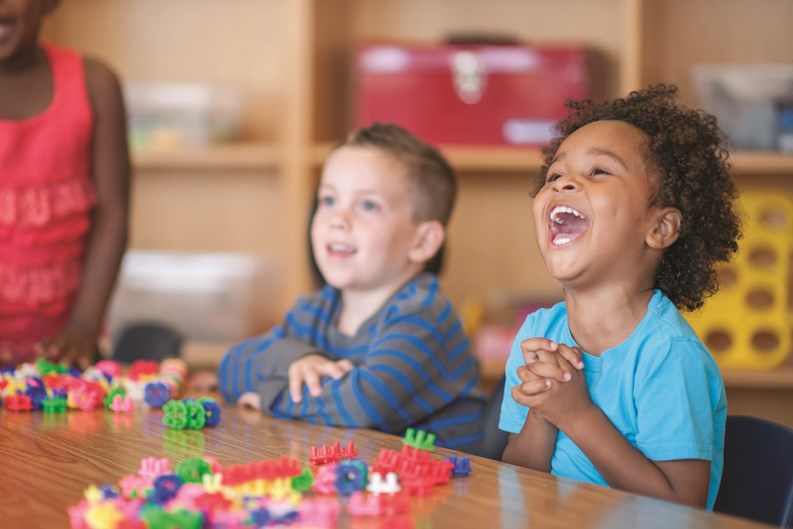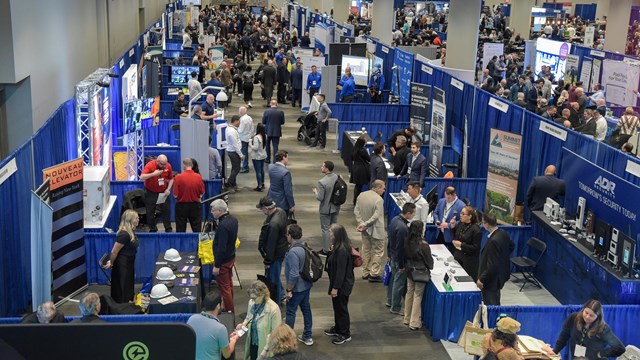As times change and we encounter life’s transitions, many of the things we once desired take on new forms and shapes. None of those transitions is quite as profound as starting—and raising—a family, and for unit owners who are also parents, having in-house amenities and programming that support them in the job of bringing up young kids is increasingly important. Parent-owners want their building or HOA to provide them with safe, stimulating spaces and activities—and both developers and boards are doing just that, sometimes in places where they had never existed before.
Younger Residents, Different Needs
Developers and clued-in boards alike know that buildings and associations that take into account the needs of a changing community demographic tend to do better on nearly all fronts, including resale value. Needs have a tendency to change too. We want to keep our children close in a world that is more unpredictable than ever—and while we don’t want them cooped up inside and bored, it is hard to allow them to venture out as we once did. Long gone are the days of stickball in the streets, or playing jacks on the sidewalk. As our children become more sophisticated and tech-savvy, keeping up with the times can prove daunting to both parents and to those tasked with programming activities for kids in multifamily communities.
That said however, the child at play has remained regardless of the times. You’d be hard pressed to find a child who can resist the allure of a jungle gym or swing set. Not only does it entertain them, it encourages an active, healthy lifestyle cleverly disguised as frolicking. John McConkey is the market insights manager for Landscape Structures, a company located in Minnesota that provides playground equipment and structures nationwide. “Kids haven’t changed,” he says. “They still want to swing, and slide, and climb and spin. It’s important to appreciate the value of play.”
One of many questions often posed to realtors and association managers is the proximity and density of local parks and playgrounds but increasingly, parents don’t have to look any further than right inside the building they’re buying into.
The Kids Are Okay
Time was, if your building had a gym with a treadmill and some dumbbells, or maybe a lounge with some couches and a pool table, you were all set. It’s only fairly recently that kid- and family-focused amenities became a consideration in newly constructed buildings and existing communities alike. According to Scott Stewart, a real estate broker who has been with the New York based Corcoran Group for 20 years, the trend of those who are already parents or parents-to-be beginning to consider the spaces and amenities available for children has really only been in full swing the last 15 years or so. Times change, and when you start to notice more strollers and car seats, you start thinking. Developers must be mindful of these growing trends as well.
When it comes to kid- and family-friendly amenities however, everything from a teeter-totter to an arts-and-crafts room count toward making a community attractive to families. Some buildings just provide space—in the form of a playground with equipment, or the aforementioned art room—while others have committees or hired pros put together organized outings to zoos or museums, as well as in-house activities like crafting workshops, book clubs, or other fun diversions for their community’s youngest members.
It’s Better With Friends
If your building or HOA is looking to develop kid-centric programming, you don’t have to do it all by yourselves. There are plenty of opportunities to partner with companies that specialize in friendly spaces and events for kids.
A number of buildings in Jersey City and Hoboken, New Jersey are kid-friendly. In fact, the demographic of these once-port cities have changed to accommodate more and more families, says Henry Waller, vice president of Toll Brothers City Living. Waller tells Brick Underground that “ten years ago, there were no bike racks, and now they’re everywhere. And they’re all filled up with kids’ bikes.”
Take 1400 Hudson Street, for example. “At that building we have a dedicated children’s room that offers an area for children from the ages of 7 and under to play in,” Waller says. “We’ve had very good success having a strong image in our children’s playroom. We did the building across the street with a boat, so kids could jump in and out of the boat; 1400 Hudson will have a train in the children’s playroom. There will be a seat for the engineer and one for the caboose. It’s great for two things: one the children like it because it’s a different area to play on a rainy day, and two, it’s great for the buying process. It’s a strong image, they may not remember the building, but they’ll remember the boat,” Waller explains.
Consisting of 236 residences, 1400 Hudson Street offers studios to three-bedrooms, all featuring open floor plans and wide plank oak flooring throughout. Modern kitchens offer quartz stone countertops, custom wood cabinets, as well as Bosch and Thermador appliances. Baths include custom vanities, large glass showers, Kohler fixtures and rich porcelain floors. Select homes offer private terraces.
Residents have access to a wide-range of amenities, besides the playroom, including a residents’ lounge, billiard room, 24-hour attended lobby, fitness center, dog wash room, and on-site parking. Bicycle storage and private storage are also available.
The playrooms, according to Waller, are relatively easy amenities to take care of. You just have to maintain the areas and keep them clean.
“It’s a great place for the children and their parents to interact. It’s also a great place, for when all the playgrounds are closed because of the snow or rain, to let your kids run around and have fun.”
Another Toll Brothers property, Maxwell Place on the Hudson, in Hoboken, also features a custom-designed playroom for the small fry to the young-at-heart.
Across the river in New York City, specialty companies like Kidville operate upscale facilities that cater to newborns through five years of age, as well as their families, offering activities and programs tailored to each developmental stage, as well as indoor play areas and kid-centric boutiques in the company’s brick-and-mortar locations.
Stewart notes that these amenities allow children and parents to meet and become friendly, thus encouraging a sense of camaraderie within the building community.
Whether you’re living in a high-rise in the heart of a big city, or in a more spread-out suburban HOA, that sense of safety and community adds a value to homeownership that is beyond just dollars and cents. And the trend today is moving back to cities from the suburbs. Hence, the search for child-friendly amenities.
By providing communal play spaces in buildings, children can have a place to play and interact socially with other kids, which is outside of their apartments, but still within a relative comfort zone. If you are a parent who doesn’t like stepping on a pile of Legos en route to your morning coffee, a play space can help keep toys somewhat contained. If you don’t want to have to tidy up your apartment every time you host a multi-kid play date, you can take them down to the playroom and let them play all they want.
In addition, as the professionals point out again and again, playrooms and children’s programming allows kids to have a communal play date where they meet their neighbors, allowing them to have friends within their building, instead of just at school or among their own siblings. So it increases their social network of playmates.
And there’s another perk as well, children’s amenities, in buildings that have them, tend to get more use than some of the other, more exotic amenities available in newer buildings—even gyms and media rooms. Kids are extremely active and, for better or worse, are never going to get tired of playing.
Remember that all playgrounds and play spaces must conform to the standards of organizations such as the International Playground Safety Institute (IPSI), The American Society for Testing and Materials (ASTM) and the U.S. Consumer Product Safety Commission. It is left up to the primary caregivers to administer supervision in these spaces, with the possible exception being areas that have considerable surveillance, or the rare association that hires outside supervisory staff.
Whether your building or association opts to designate a rarely-used lounge as a playroom, or puts together a programming committee devoted to organizing outings for families with young kids, or goes all out and installs a playground complete with a state-of-the-art jungle gym, rock wall or swingset, you can bet that it will be a much-used, much-loved addition to your building community.
Staff writer John Zurz contributed to this article.





Leave a Comment